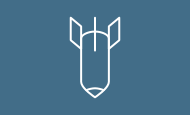Press Release:
Amnesty's "Gaza Platform": All Window Dressing, No Substance
Jerusalem – Amnesty International’s Gaza Platform, an “online tool” that will be launched tomorrow to “map[] Israeli attacks in Gaza” during the 2014 Gaza conflict, substitutes interactive graphics and digital technology for substantive fact-finding, according to Jerusalem-based research institute NGO Monitor. The Platform is window dressing and fancy packaging for the NGO’s lack of credible research methodology and absence of military and legal expertise.
“Amnesty has a long history of exploiting human rights to single out and demonize Israel. Indeed, behind the colorful graphics and fancy maps lie the familiar baseless and distorted allegations from political advocacy NGOs Amnesty, Al Mezan, and Palestinian Center for Human Rights,” said Prof. Gerald Steinberg, president of NGO Monitor. “The Platform also ignores Hamas’ war crimes against civilians in Israel and Gaza, and represents a disproportionate allocation of resources towards attacking Israel while far more deadly conflicts rage across the globe.”
NGO Monitor notes that the Platform simply parrots publications by Al Mezan and Palestinian Center for Human Rights, without independent verification. The context of combat with Hamas, Islamic Jihad and other Palestinian terror groups is completely erased, as if there were no forces fighting with the Israeli army in Gaza. Similarly, there is no mention of the more than 4,000 rockets launched from Gaza against Israeli civilians.
For this project, Amnesty is partnering with a group by the name of Forensic Architecture, headed by Eyal Weizman. Weitzman is a former board member of the Israeli political NGO B’Tselem and signed a petition during the 2009 Gaza conflict calling for the UN Security Council and the EU to impose sanctions on Israel.
In addition, Amnesty’s Gaza Platform continues to promote the NGO distortion of the laws of armed conflict by inventing legal standards and leveling conclusions solely based on the effects of particular strikes. These misrepresentations are common practice for political NGOs and was endemic in the UN Commission of Inquiry Report on the 2014 Gaza War. Essential information – location of enemy forces and military targets, nature of combat, and intelligence available to commanders at the time of the fighting – is entirely missing. Without these details, the Platform’s “data” are fatally flawed.
“Contrary to Amnesty’s claims, the information in the Gaza Platform is not evidence of any alleged ‘war crimes’ or ‘patterns in the attacks’ and cannot credibly be used for investigations into the 2014 Gaza conflict,” continued Steinberg. “While visually exciting, these sorts of online tools have very limited utility in determining whether violations actually occurred.”
For further information on NGOs and the 2014 Gaza Conflict, see: Filling in the Blanks: Documenting Missing Dimensions in UN and NGO Investigations of the Gaza Conflict
See also Anne Herzberg and Gerald M Steinberg, “IHL 2.0: Is There a Role for Social Media in Monitoring and Enforcement?,” Israel Law Review, November 2012.

